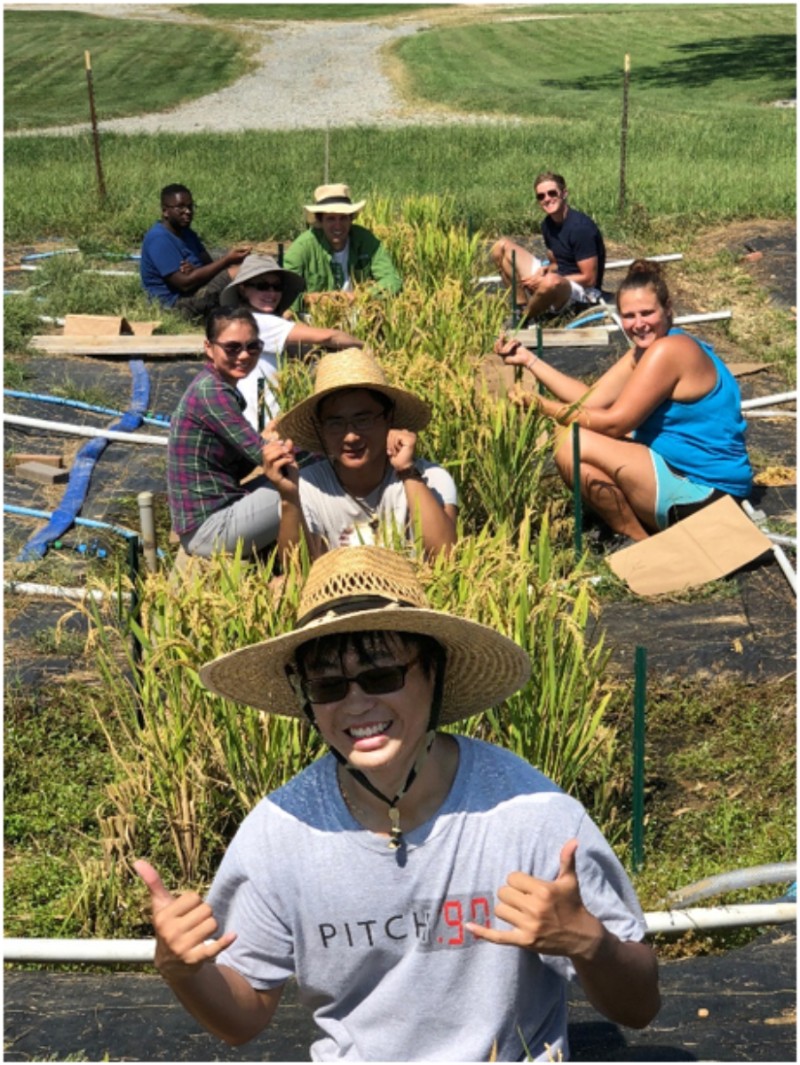
Category: Plant and Soil Sciences
Silicon to the rescue
September 02, 2020 Written by Dante LaPenta
The world eats a lot of rice. Internationally, it’s the second biggest cereal crop trailing only corn.
But this staple grain for nearly half of world’s population can accumulate arsenic, a cancer-causing compound that can show up in drinking water or food. Enter silicon — a critical nutrient for rice. The element provides improved growth and yield, improved water and nutrient use efficiency and resistance to a range of stresses. Silicon can also decrease arsenic uptake by rice and, therefore, lower the human health risk. Even though silicon is the second-most abundant element in Earth’s crust, much of it is not soluble enough for plant uptake. So, for some crops like rice that take up a lot of silicon, silicon may be added as a fertilizer in many different forms including calcium silicate or silica-rich plant residues. But these different forms of silica fertilizers lead to different amounts of “plant-available” silicon. To protect human health, scientists need a robust extraction procedure to predict “plant-available” silicon levels in soils, which allows farmers to better target silicon fertilizers.
Former University of Delaware graduate student Weida Wu is first author on a research article measuring plant-available silicon in rice paddies, which was recently featured on Soil Science Society of America Journal. During his time in the M.S. in Soil Science program, Wu worked under Angelia Seyfferth, associate professor of biogeochemistry and plant-soil interactions.
“Because of the critical role silicon plays in rice, it is important to be able to assess how much of the soil silicon is plant-available,” explained the Department of Plant and Soil Sciences professor. “This is typically done by a soil extraction, but some extraction methods can overestimate the plant-available soil silicon depending on past silicate fertilizer use.”
 In this study, the UD research team examined several extraction methods, relating them to plant silicon levels in rice grown in UD’s Rice Investigation, Communication and Education (RICE) Facility over a three-year period. In the rice paddies, researchers examined different silicon fertilizers, including chemical fertilizers and silicon-rich rice husks, and operated under varying degrees of flooding. Among the five extraction methods examined, the winner was a dilute salt solution as the extractant for at least four hours and up to 16 hours of shaking time. Shorter times were faster but not as reliable; other extractants overestimated plant-available silicon for soils treated with calcium silicate fertilizers.
In this study, the UD research team examined several extraction methods, relating them to plant silicon levels in rice grown in UD’s Rice Investigation, Communication and Education (RICE) Facility over a three-year period. In the rice paddies, researchers examined different silicon fertilizers, including chemical fertilizers and silicon-rich rice husks, and operated under varying degrees of flooding. Among the five extraction methods examined, the winner was a dilute salt solution as the extractant for at least four hours and up to 16 hours of shaking time. Shorter times were faster but not as reliable; other extractants overestimated plant-available silicon for soils treated with calcium silicate fertilizers.
This work moves the rice farming community closer toward robust plant-available silicon soil testing. Findings illustrate methods that can be used to predict plant-available silicon in soils across time and variable agronomic conditions.
Now working for the Chinese Academy of Environmental Planning, Wu is grateful for his time at UD.
“It was a lot fun working with Dr. Seyfferth. Her door was always open, and she encouraged you to ask questions. She always told me to not be afraid of making mistakes. The key is to learn from every failure and try to avoid it for the next time.”
